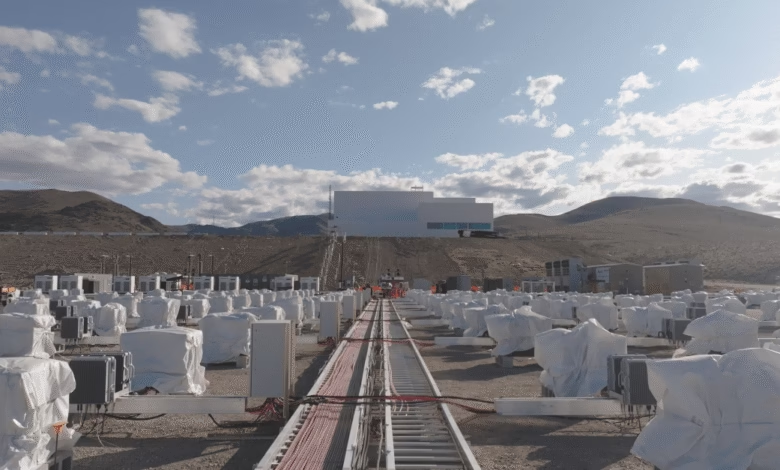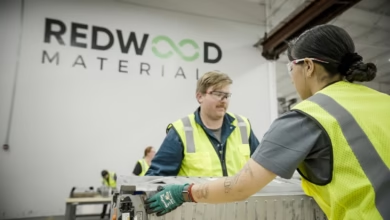Redwood Materials Repurposes Old EV Batteries Into Microgrids

▼ Summary
– Redwood Materials repurposes old EV batteries into cost-effective energy storage systems, diverting them from recycling to fill grid gaps.
– The company, founded by a former Tesla technologist, processes over 20 GWh of batteries annually, representing 90% of North America’s lithium-ion recycling.
– Many recycled batteries retain up to 50% energy capacity, making them suitable for stationary storage despite being unfit for EVs.
– Redwood engineers test batteries for reuse, integrating them into modular storage systems, with over 1 GWh currently in the pipeline.
– The company deployed a 12 MW/63 MWh microgrid in Nevada, powering an AI data center and claiming it as the world’s largest second-life battery project.
Redwood Materials is transforming aging electric vehicle batteries into powerful energy storage solutions, offering a cost-effective alternative to new systems while reducing waste. The company, launched by a former Tesla executive, has established Redwood Energy to oversee this initiative, focusing on giving “depreciated but functional” batteries a second life as grid-scale storage units.
Each year, Redwood processes more than 20 gigawatt-hours of batteries, enough to power roughly 250,000 EVs, making it the dominant lithium-ion battery recycler in North America. Many of these batteries still retain up to half their original capacity, making them unsuitable for vehicles but ideal for stationary energy storage. Instead of breaking them down immediately, the company repurposes them into modular systems that can either operate independently or integrate with existing power grids.
With over 100,000 EVs expected to retire this year alone, the potential for battery reuse is expanding rapidly. Redwood’s engineers assess each incoming battery pack, determining whether it should be refurbished or recycled. Those deemed reusable are incorporated into scalable storage solutions, with the company currently managing over a gigawatt-hour of repurposed batteries, a figure projected to grow by an additional 5 GWh in the near future.
One of Redwood’s most notable projects is a 12-megawatt, 63-megawatt-hour microgrid at its Nevada facility. This system, powered entirely by upcycled EV batteries, supports a high-performance data center for AI infrastructure firm Crusoe. Dubbed the world’s largest second-life battery deployment, it stores enough energy to sustain 9,000 households, facilitate 20 cross-country Amtrak journeys, or enable an EV to travel the distance to the moon.
By extending the lifespan of EV batteries, Redwood is not only cutting costs but also easing pressure on raw material supply chains. As more electric vehicles age out of service, this approach could play a crucial role in stabilizing energy grids while promoting sustainability.
(Image: Redwood Materials)
(Source: The Verge)


